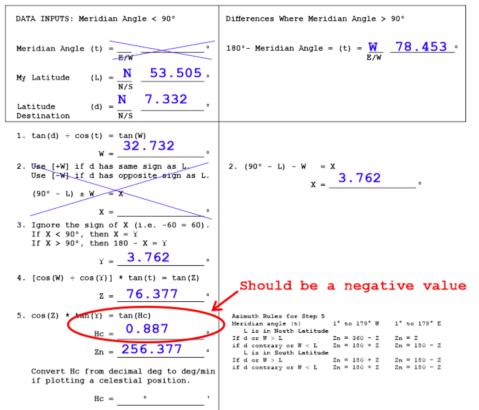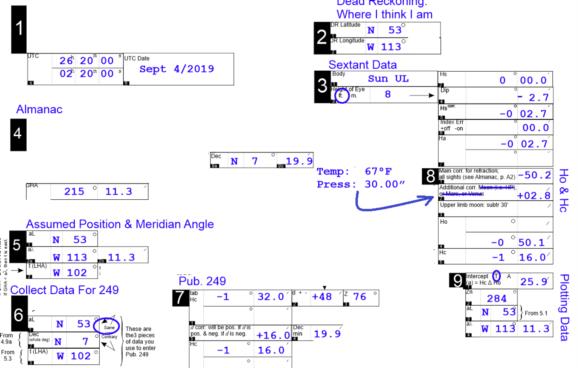
NavList:
A Community Devoted to the Preservation and Practice of Celestial Navigation and Other Methods of Traditional Wayfinding
From: Bob Goethe
Date: 2019 Sep 3, 19:24 -0700
John Karl, in "Celestial Navigation in the GPS Age", p. 104, talks about how to do "St. Hilaire without a Sextant". When the upper limb of the sun drops below the horizon, you note the time and Hs as 0° 00.0', and work the sight as normal with Pub. 249.
Since there is no sextant, there is no index error to take account of.
Image1 is a copy of my worksheet, with extraneous fields erased. The key field in question is field 8.5, the Hc of -1° 16.0'.
This seems to make sense to me when I work it out with Pub. 249.
My question has to do with direct calculation of this sort of problem with the Bygrave equations. In the nature of things, one will seemingly never get a negative value for Hc with these equations as they stand.
My direct calculation values for Z and Zn agree with what I got from Pub. 249, seen in Image2. But the Hc comes out positive instead of negative when I reduce it with Bygrave.
Is there an additional rule I need to apply to make Bygrave work with zero-altitude shots? Or is Bygrave unsuited to this sort of scenario?
Thanks,
Bob








